|
. |
|
What
does it mean |
Patrick
Boylan, University of Rome III
patrick @ boylan.it
.
|
Communication? Language? English? |
.
"communication"
(Jakobson,
1982: 350-377 [1958])
. .
.
|
"communication" in culturally asymmetrical situations |
||||||||||||||||||||
|
Establish
a relationship in which to search for a common code |
||||||||||||||||||||
"language"
(according
to Saussure) has two meanings:
|
1.
langue* |
*set
of lexical-syntactic oppositions |
|
2.
parole |
|
Unfortunately,
Saussure developed only the linguistics of langue
and left aside inquiring into the linguistics of parole.
(His
students, Sechehaye and Bally, did however attempt
such a study!)![]()
A. Sechehaye: "...conflit entre ce qui est vivant et ce qui est formel" – Essai sur la structure logique de la phrase,1950 C. Bally marks "le passage d'une stylistique linguistique à une stylistique expressive" – Sylvie Durrer, Introduction à la linguistique de Charles Bally, 1998.
"language"
Thus
there exists a Linguistique
de la parole which
studies expressive intentionality through precisely those
"manifestations... individuelles et
momentanées" in which "il
n'y a rien de plus que la somme de cas particuliers." –Saussure,
Cours, 1916, p. 25,
It
studies the
formulation of the will to mean
that informs every
communicative act -- single,
unique, yet part of a whole
(the individual's personal style and communitarian
culture). This highest level of
meaning-making is where communicative intents arise and become
finalized and thus pre-conceptually “structured”, the
level where
language as parole consists of highly modulated volitional states – states of “pre-verbal meaning” – and
language as langue consists of the sedimentation of such states, producing in a given individual a disposition to communicate repeatedly in the same characteristic way.
How
to represent a cultural matrix?
Hofstede,
G. (1980), Culture's Consequences: International Differences in
Work-Related Values. Beverly Hills: Sage.
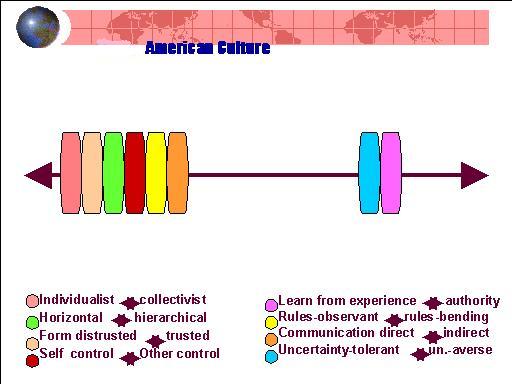
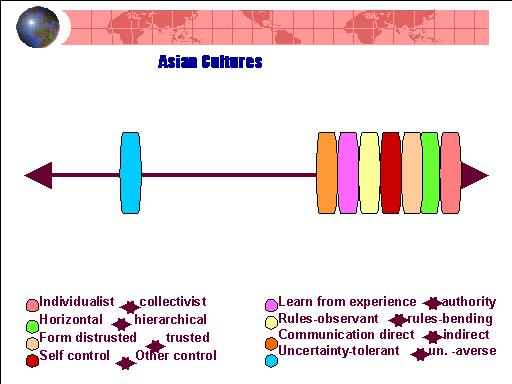
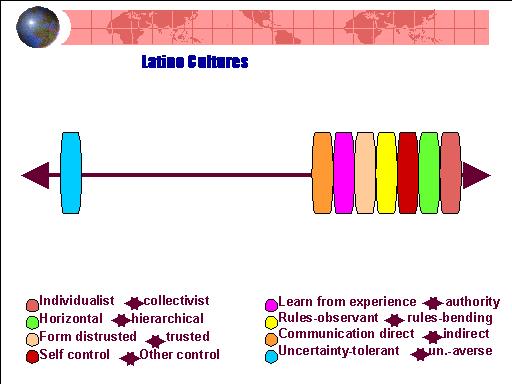
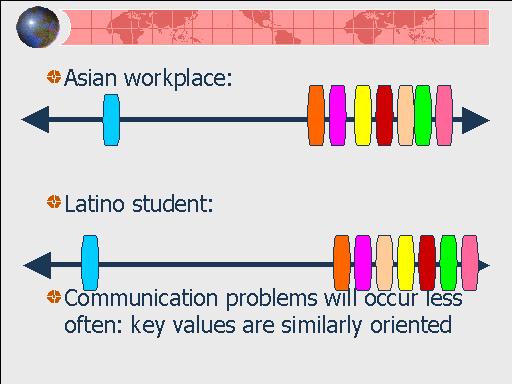
L. Beamer, California State University, www.dialogin.com
Where
do these different mentalities come from?
From
what do we learn them?
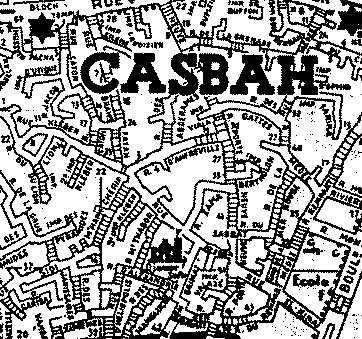
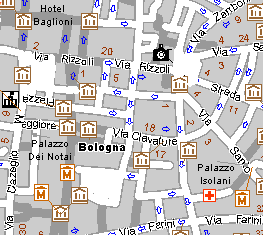
 From
man-made (“artificial”)
From
man-made (“artificial”)
environments:
the
city centers of Algiers,
Bologna, Kansas
City
 From
man-interpreted natural
From
man-interpreted natural
environments:
Asian
and American children
are taught to see in different
ways the
rider and the valley.
In what ways?
“Riding
the Fence”, a painting by Wanda Coffey
cited by R.
Dooley, “Four cultures, one organization”,
Organization
Development Journal, 21:2 (2003)
Words
and gestures thus assume, as their “meaning,”
the
entire alogical sedimentation of perceived behaviors, intents
and
values
characterizing the communicative situations in which they
have
been perceived and used.
|
|
|
|
|
|
|
|
|
|
|
|
Words
and gestures thus assume, as their “meaning,”
the
entire alogical sedimentation of perceived behaviors, intents
and
values
characterizing the communicative situations in which they
have
been perceived and used.
|
|
|
|
|
|
|
|
|
|
|
|
|
|
|
|
|
|
|
|
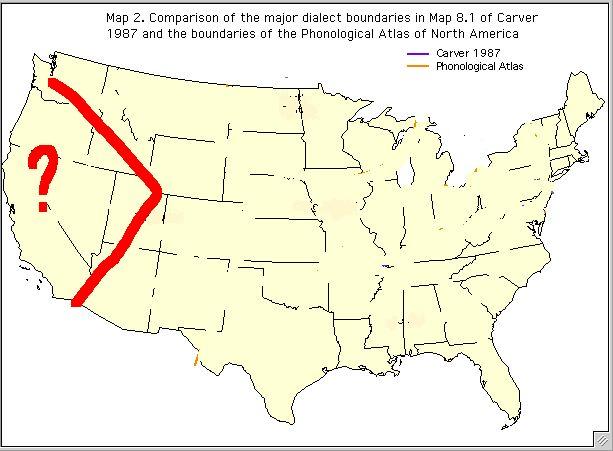
"Il
est parti vers l'ouest!"
Où?
![]()

\
\


The
study of English
is
an inquiry into the peculiar will
to mean perceived in the expressive behavior of native
speakers of English – and the
internalization of the corresponding behavioral matrix which
generates it.
That
matrix derives
from a peculiar will to
be (i.e. from a peculiar culturally-determined existential
stance), historically
sedimented in each native speaker as an Anglo or Anglo-derived
Weltanschauung.
In
turn, that sedimentation creates the affinity for
– and the disposition to use – Anglo or Anglo-derived
expressive modes which are considered the hallmarks of “native
speaker competence”.
![]()
The study of English
has therefore, as its principal aim, the acquisition of the affinity and disposition just described,
not necessarily with the objective of attaining (near) native-speaker competence (a goal that students should be free to opt for or not),
but
necessarily with the much more fundamental objective of
learning to place oneself within the cultural mind set of future
native-speaker interlocutors. This will enable one to understand
them better and also to render one's own cultural identity and
culturally determined mind-set better (i.e. in terms more readily
understood and accepted by one's interlocutors).![]()
The study of English
therefore
requires, even if the goal is not attaining (near)
native-speaker competence, the internalization of an Anglo* “way
of being” or “existential stance” (manifesting a
peculiar Anglo* will to be). These stances can be described
using “cultural dimensions” (see 7-11
above).
But how to describe the Anglo* modes of
expression (verbal, paraverbal, behavioral) that, together with the
Anglo* existential stance, create the peculiar will to mean
called “English”?
*Anglo
or Anglo-derived, in the case of linguistically and culturally
distinctive communities of native speakers of English: within
Britain (Scots, Geordies, naturalized Pakistanis, Cockneys...) and
without (Americans, Australians, Jamaicans, Indians, etc.)
Characteristics
of Anglo modes of expression
Sample
high level modes: the communicative intent manifests itself
as![]() concrete,
concrete,
![]() explicit,
explicit,
![]() practical,
practical,
![]() confrontational (but gentlemanly
so: hedging,
understatement),
confrontational (but gentlemanly
so: hedging,
understatement),![]() eclectic...
eclectic...
Sample
low level modes: the intent manifests
itself through![]() phrasal verbs, quasi deictic definite articles – spatial
concreteness
phrasal verbs, quasi deictic definite articles – spatial
concreteness![]() stress placement to “telegraph” essential information –
explicitness
stress placement to “telegraph” essential information –
explicitness![]() mostly
baton (with few redundant iconic) gestures –
practicality
mostly
baton (with few redundant iconic) gestures –
practicality![]() turn
taking to avoid silences & limit multiple floors –
gentlemanliness
turn
taking to avoid silences & limit multiple floors –
gentlemanliness![]() creativity in mixing genres (new situations, fads...) –
eclecticism
creativity in mixing genres (new situations, fads...) –
eclecticism
Code:
![]() verbal,
verbal,
![]() paraverbal,
paraverbal,
![]() behavioral,
behavioral,
![]() interactional,
interactional,
![]() discoursual...
discoursual...
The typically Anglo expressive modes are shared by increasingly fewer varieties of “English” in the world.
 The
end of the British Empire weakened the linguistic-cultural domination
of the periphery by the center. As local cultures asserted themselves, the New Englishes of the outer circle started to become "Non" Englishes, i.e.
autonomous languages. The
Englishes of the expanding circle, having no authoritative norm provider, began
to create koinés.
The
end of the British Empire weakened the linguistic-cultural domination
of the periphery by the center. As local cultures asserted themselves, the New Englishes of the outer circle started to become "Non" Englishes, i.e.
autonomous languages. The
Englishes of the expanding circle, having no authoritative norm provider, began
to create koinés.
(Kachru, 1985)
A
Table of the Varieties of English in the world> ![]()
Ex.:
Tok Pisin (New
Guinea English
– Norm provider?) > ![]()
![]()
The typically Anglo expressive modes are shared by increasingly fewer varieties of “English” in the world.
In these New (and one day Non-) Englishes, the low level Anglo forms have remained, but the higher level Anglo expressive modes are changing radically.
No
matter if these languages still appear to be “English”
because of their words and syntax, they are in fact ceasing to be
“English” – before our very eyes – precisely
because languages are not words, but sedimentations of
wills to mean molded by a cultural will to be.
When a people's long-suppressed will to be reasserts itself,
their will to mean changes and a new language is created out
of the debris of the old.
.
English
has become a métis family of idioms, with divergent wills to
mean masked by the low-level similarities.
(This
applies especially to spoken varieties; written varieties still
continue to conform, more or less, to once-British and now largely
American writing standards.)
Will
the various Englishes become non-intelligible, as in the shift from
Latin to Romance languages? Not immediately:
telecommunications, global transportation (tourism...) will slow the
process down.
But
for now, the two most influential varieties of English
remain:

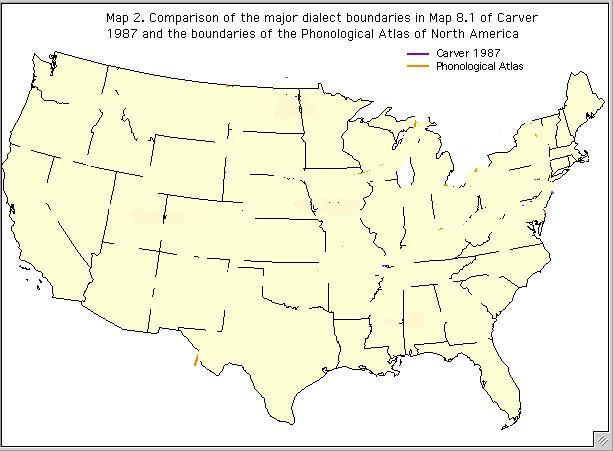
SBE
(South-East or Standard British
English)
GA
(General American)
Tim
Sebastien & Robert Brown
.
.G.W.
Bush & Condaleeza Rice
Hortensia
and her mother
Nashville
characters
Asians:
"lonely," "unhappy," "depressed"
Americans:
"free," "heavenly," "peaceful,"
“happy."
. Tim Sebastian interviews Robert
Brown*
Tim Sebastian interviews Robert
Brown*
*wrongly imprisoned by Manchester
police for 25 years (Hardtalk, BBC,
16.01.2003, 11.30 a.m. GMT)
SEBASTIAN;
You
signed the statement which incriminated you for
the murder of the 51-year-old woman. Did you realize
the gravity of what you were doing?
BROWN:
No, I did not realize the gravity of
it at all, I didn't realize the seriousness or the consequences of my
actions at that age. I mean, the... the... the statement isielf, it,
absolutely no real fact in it,the litt'l bits that were factual the
police (m)ade it up themselves
.
 Sound
Sound Back
Back
M.
Leigh, Secrets and Lies, Channel Four Films,
London, 1996
|
Economic changes = Changes in communication |
||
|
Kind
of production |
Kind of L2 contact |
Kind of language learning required |
|
1. NAZIONAL |
letters/faxes |
scholastic English |
|
2. INTERNATIONAL |
Encounters |
language school English |
|
3. MULTINATIONAL |
Sojourns |
English
for IC* |
|
4. TRANSNATIONAL |
Episodes |
English
for IC |
Trends:
Language
and Intercultural Communication
>
![]()
.
Studying and teaching English...
1. as a way of representing
2. as a way of doing
3. as a way of being <level of ICCC*
* InterCultural Communicative Competence